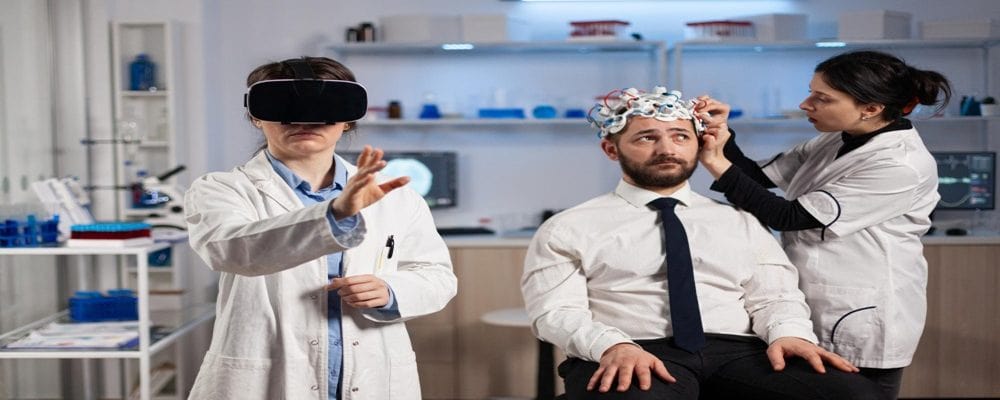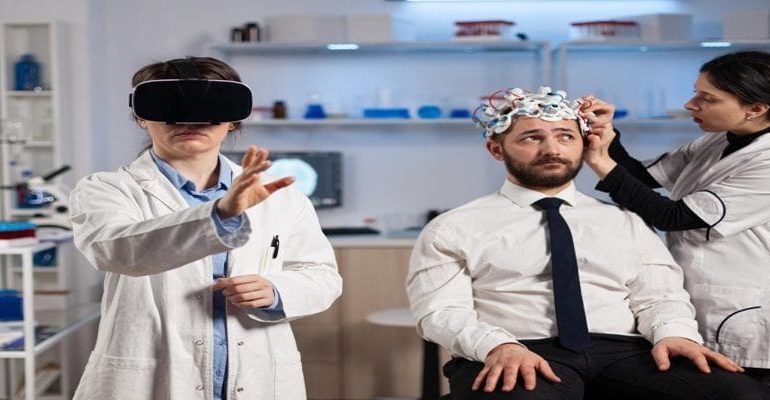
Virtual Hope: Harnessing VR for Next-Gen Cancer Management

Virtual Hope: Harnessing VR for Next-Gen Cancer Management
Cancer, a relentless adversary that has plagued humanity for centuries, continues to challenge medical science. However, in recent years, advancements in technology have opened up new avenues in cancer treatment and patient care. Among these innovations, Virtual Reality (VR) and Augmented Reality (AR) stand out as promising tools that offer novel approaches to diagnosis, treatment, and patient support.
Understanding Cancer through VR:
Virtual Reality has proven to be a powerful tool for medical professionals and researchers, providing an immersive platform to understand the complexities of cancer at a cellular and molecular level. VR allows scientists to visualize and manipulate 3D models of cancer cells, enabling a more comprehensive understanding of the disease’s progression.
Researchers can explore the intricate details of tumour growth, identify potential treatment targets, and simulate the effects of various drugs on cancer cells. This technology accelerates the pace of drug discovery and facilitates more targeted and effective treatment strategies.
Understanding the Cancer Challenge:
Cancer, a complex and multifaceted group of diseases, demands a holistic approach to effective treatment. Traditional methods often fall short of providing comprehensive solutions due to the intricate nature of cancer cells and their behaviour. Companies like FundamentalVR, Sapizon Technologies, and others recognize this challenge and have embarked on a mission to revolutionize cancer care through the integration of VR and AR technologies.
The Rise of VR/AR in Cancer Care
VR and AR technologies have gained traction across various industries, including healthcare. In cancer care, these technologies offer unique advantages:
Enhanced Visualization:
VR/AR enables healthcare professionals to visualize complex medical data in three dimensions, providing a deeper understanding of tumour morphology and spatial relationships.
Patient Engagement:
VR/AR applications engage patients in their treatment process by offering immersive experiences that educate them about their condition and treatment options.
Training and Simulation:
Medical professionals can use VR/AR simulations for training purposes, allowing them to practice complex procedures in a risk-free environment.
Therapeutic Gaming:
Therapeutic gaming, leveraging immersive technology, addresses mental health challenges through tailored experiences. Examples include VR exposure therapy for phobias, mobile apps promoting relaxation, and biofeedback games for stress reduction. With gamification, it fosters motivation and engagement.
Cancer Visualization Tools:
Cancer visualization tools utilize VR/AR to provide three-dimensional insights into tumour morphology and spatial relationships, aiding in diagnosis, treatment planning, and research advancements in oncology.
Enhancing Medical Training with VR:
Sapizon Technologies has developed immersive VR modules to enhance medical training for oncologists and healthcare professionals. These modules provide a realistic and interactive environment, allowing practitioners to simulate complex surgical procedures, study tumour behaviour, and practice decision-making in a risk-free setting. By bridging the gap between theory and practice, Sapizon’s VR solution empower medical professionals to refine their skills and stay abreast of the latest advancements in cancer treatment.
Latest Use Cases and Trends
Let’s explore some of the latest use cases and trends in VR/AR applications for cancer care:
Surgical Planning and Navigation:
Surgeons are utilizing VR/AR to plan and navigate complex cancer surgeries with greater precision. For example, software platforms like AccuPlan offer customizable surgical planning tools that integrate patient-specific data into immersive VR environments.
Pain Management and Distraction Therapy:
VR has shown promise in managing cancer-related pain and alleviating treatment-related anxiety. Patients undergoing chemotherapy or radiation therapy can immerse themselves in virtual environments that distract them from discomfort and stress.
Remote Monitoring and Telemedicine:
AR applications enable remote monitoring of cancer patients, allowing healthcare providers to track symptoms, medication adherence, and overall well-being. Companies like Oncomfort develop AR solutions that deliver cognitive therapy and relaxation techniques to cancer patients in their homes.
Clinical Trials and Drug Development:
VR/AR platforms facilitate the visualization of complex biological processes, aiding researchers in understanding cancer mechanisms and accelerating drug development. By immersing themselves in molecular landscapes, scientists can identify potential drug targets and predict treatment outcomes.
Patient Empowerment and Support:
Cancer diagnosis can be overwhelming, often accompanied by feelings of fear, anxiety, and isolation. VR/AR solutions offer a means to address these psychosocial aspects by providing avenues for patient education, support, and empowerment.
Patient-centric VR platforms offer educational resources, mindfulness exercises, and virtual support groups, fostering a sense of community and empowerment among cancer patients. By facilitating connections with peers and healthcare providers, these applications play a vital role in enhancing the overall patient experience and quality of life.
Wrap up
The integration of VR/AR technologies into cancer care represents a paradigm shift in how we approach diagnosis, treatment, and patient support. These innovative tools empower healthcare professionals with enhanced visualization capabilities, engage patients in their care journey, and accelerate research efforts toward better cancer treatments. As VR/AR continues to evolve, we can anticipate even more ground-breaking applications that will revolutionize the fight against cancer.